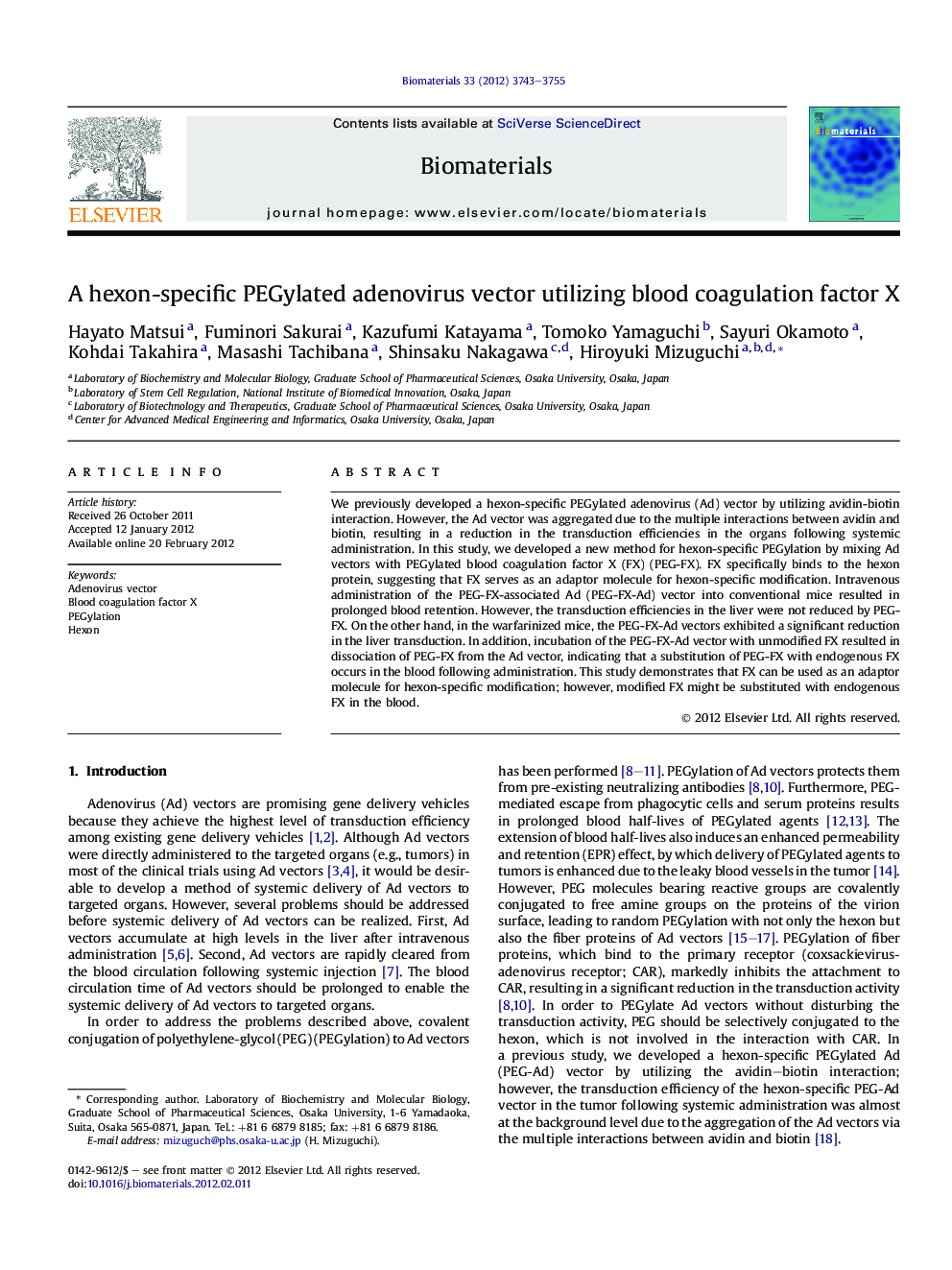| Article ID | Journal | Published Year | Pages | File Type |
|---|---|---|---|---|
| 6952 | Biomaterials | 2012 | 13 Pages |
We previously developed a hexon-specific PEGylated adenovirus (Ad) vector by utilizing avidin-biotin interaction. However, the Ad vector was aggregated due to the multiple interactions between avidin and biotin, resulting in a reduction in the transduction efficiencies in the organs following systemic administration. In this study, we developed a new method for hexon-specific PEGylation by mixing Ad vectors with PEGylated blood coagulation factor X (FX) (PEG-FX). FX specifically binds to the hexon protein, suggesting that FX serves as an adaptor molecule for hexon-specific modification. Intravenous administration of the PEG-FX-associated Ad (PEG-FX-Ad) vector into conventional mice resulted in prolonged blood retention. However, the transduction efficiencies in the liver were not reduced by PEG-FX. On the other hand, in the warfarinized mice, the PEG-FX-Ad vectors exhibited a significant reduction in the liver transduction. In addition, incubation of the PEG-FX-Ad vector with unmodified FX resulted in dissociation of PEG-FX from the Ad vector, indicating that a substitution of PEG-FX with endogenous FX occurs in the blood following administration. This study demonstrates that FX can be used as an adaptor molecule for hexon-specific modification; however, modified FX might be substituted with endogenous FX in the blood.
